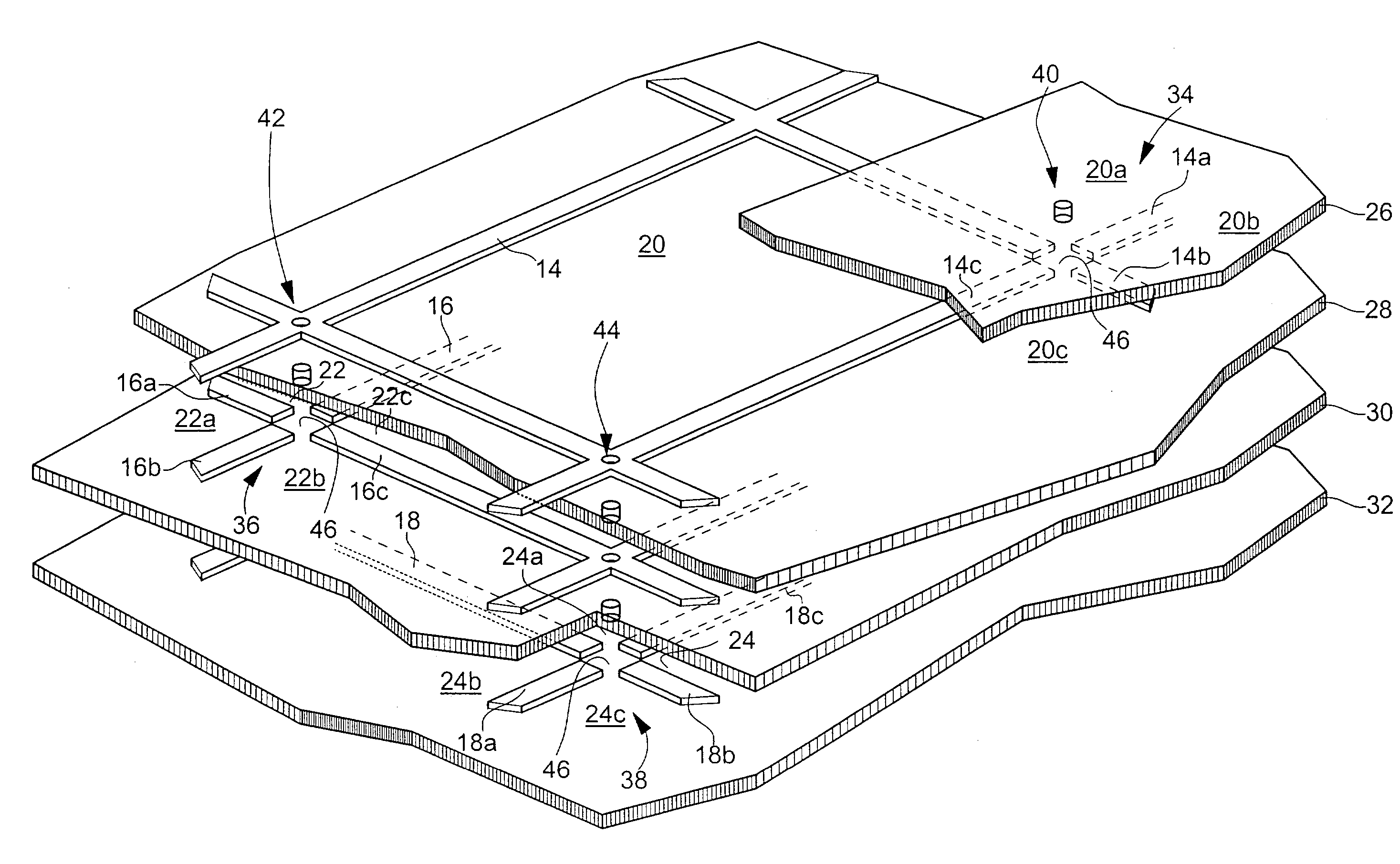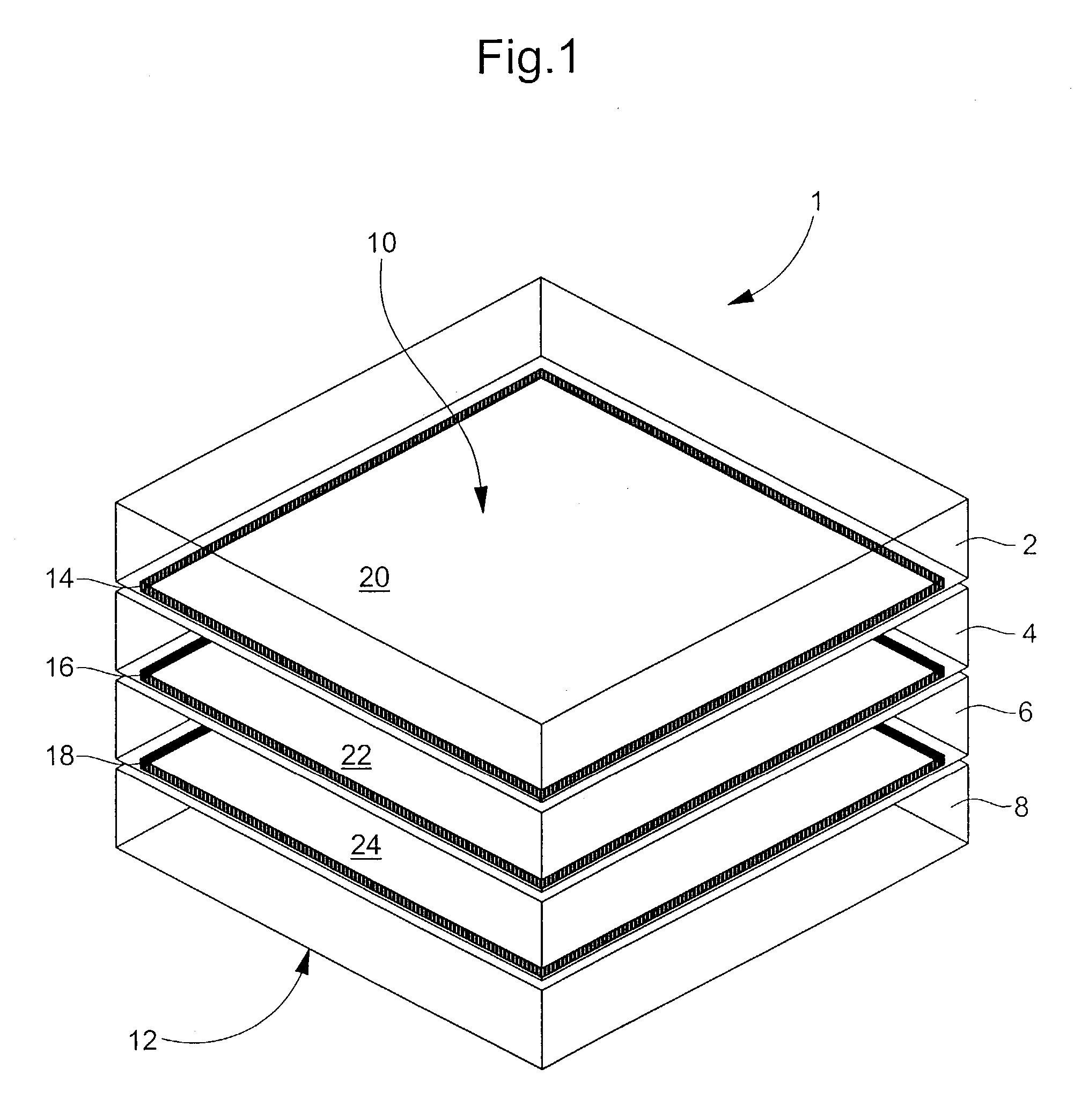Method for manufacturing a batch of multi-layered cells, such as liquid crystal display cells, or electrochemical photovoltaic cells
a multi-layered cell and batch technology, applied in the field of multi-layered cells, can solve the problems of high risk of polluting one active agent such as a liquid crystal by another liquid crystal, difficult to access the filling hole arranged in the sealing frame, and high risk of pollution by other liquid crystals, so as to achieve significant time and money saving
- Summary
- Abstract
- Description
- Claims
- Application Information
AI Technical Summary
Benefits of technology
Problems solved by technology
Method used
Image
Examples
Embodiment Construction
[0023]The present invention proceeds from the general inventive idea that consists in providing, in an assembly of substrates joined in pairs by patterns of sealing material which form the sealing frames of cells with several active layers, filling holes which will allow the layers of the same level of at least two distinct cells to be filled with liquid. Owing to these features, it is thus possible to fill, without any difficulty, the layers, for example of a colour cell comprising three liquid crystals with different optical properties, even when the cell is still in a batch. The risk of polluting one liquid crystal with another is thus avoided, and the method for manufacturing liquid crystal cells is greatly facilitated, and is thus less expensive to implement. The filling holes could be pierced in the plates before the latter are assembled, or pierced through the plates when they have already been assembled.
[0024]The present invention will be described in conjunction with a liqu...
PUM
| Property | Measurement | Unit |
|---|---|---|
| perimeter | aaaaa | aaaaa |
| optical properties | aaaaa | aaaaa |
| electric voltage | aaaaa | aaaaa |
Abstract
Description
Claims
Application Information
 Login to View More
Login to View More - R&D
- Intellectual Property
- Life Sciences
- Materials
- Tech Scout
- Unparalleled Data Quality
- Higher Quality Content
- 60% Fewer Hallucinations
Browse by: Latest US Patents, China's latest patents, Technical Efficacy Thesaurus, Application Domain, Technology Topic, Popular Technical Reports.
© 2025 PatSnap. All rights reserved.Legal|Privacy policy|Modern Slavery Act Transparency Statement|Sitemap|About US| Contact US: help@patsnap.com



